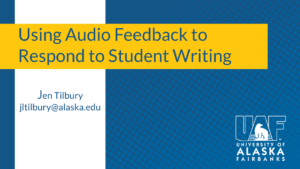Relevance
Teaching Tip – Relevancy (pdf)
The Relevance We Know Exists
We owe it to the students, the institution and the larger community to champion our material and point out the relevance that we know exists. Why else would we teach what we teach and do what we do? What instructors and students both want are courses that frame content in engaging ways. What instructors often fail to appreciate, since we are so intimate with our subjects, is that the facets of our subjects we find compelling may not be so obvious to our students. But it can be easy, and hugely beneficial, to bring what makes a subject relevant to the fore.

Students arrive in a class ready to engage the material. Some will reach course objectives no matter what the instructor does. Most students, however, learn more when the material is made relevant to more than just their grade.
LaSota’s Taxonomy of Relevancy
Relevancy isn’t measured by a sliding scale alone; one assignment is not simply “more relevant’ than the next. There are distinct aspects of an assignment or an assigned reading that establish multiple dimensions of relevancy. Just about all (hopefully) assigned readings are at least relevant within the course itself, for instance, because understanding of the content therein will be assessed at some point by the course’s teacher. This internal relevancy can feel a bit thin if it is the only reason students are supposed to find a given material relevant, hence the high school math question: “Are we ever going to use this in real life?’
Used in conjunction with some of the other ways in which a teacher can establish relevancy in a course, however, assigned material can take on new significance. Let’s take a look at some of those ways here:
- relevancy to grade
- relevancy to employment
- relevancy to important life skill
- relevancy to intellectual curiosity
- relevancy to current event
- relevancy to personal passion
If material only matters for the class grade in which the material was presented, how can we expect our students to retain what they’ve learned after it doesn’t matter anymore? Students are constantly awash with information from many separate disciplines: The means to encouraging student engagement with your material is by establishing multiple dimensions of relevance.
Relevance to Significance
It may be that you have to first engage students at the lower levels of, “Yes, you do need to learn this for the test’; however, it isn’t just for our students’ engagement that we establish the relevance of our material and our activities several times over. We should do it for our own enjoyment as well, to remind ourselves of why we love the subjects that we teach and share that pleasure with young minds who are actively searching for things to care deeply about.
I think that we have the chance to learn new ways to appreciate the significance of our subjects in the process.
So I encourage you: think about the different ways in which you can treat the material you know your students need to learn, so that they come away knowing they need to learn it, too.



